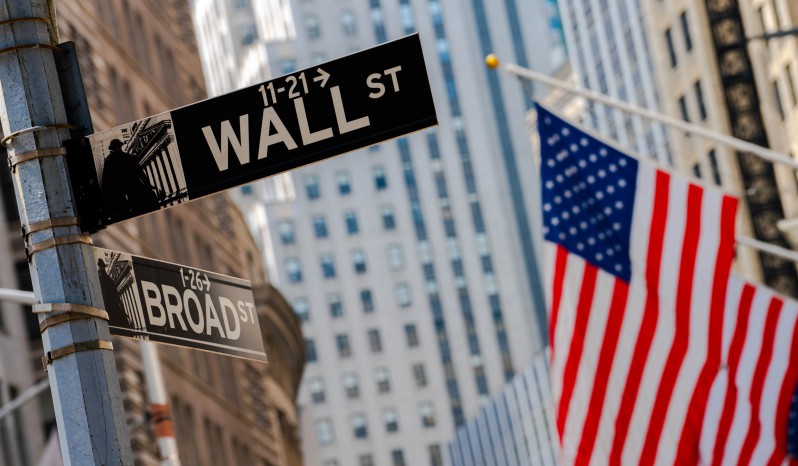
The stock market is excited about SPACs, but regulators worry they could harm retail investors.
Wall Street has a new obsession: special purpose acquisition companies (SPACs). SPACs are an alternative to the traditional way businesses raise money known as initial public offerings (IPOs). Since January 1, 2021 SPACs have raised over $88 billion, making up 83 percent of public offerings this year and raising more money than they did in all of 2020.
As investment banks and professional investors celebrate this booming market, regulators worry that the excitement around SPACs has created a dangerous bubble. Without better protections, everyday retail investors may be in trouble if the bubble bursts.
SPACs are shell companies that list themselves on public stock exchanges. Their sponsors collect money from investors and use it to acquire private businesses that plan to go public. After the acquisition, the acquired company replaces the SPAC on the stock exchange and the investors receive shares in the company. If a SPAC does not acquire a company within two years, the sponsors must give investors their money back.
SPACs originated in the 1990s. At the time, they were associated with fraudulent penny stock companies. But SPACs have reemerged in recent years as a legitimate investment tool due in large part to the COVID-19 pandemic. The pandemic encouraged companies to conduct public offerings quickly to take advantage of low interest rates and excess savings. At the same time, the pandemic has made IPOs difficult to execute because they require business owners to travel to meet with investors, and their prices are susceptible to market instability.
By conducting public offerings through SPACs, companies can address these problems. SPACs eliminate the need for extensive travel because business owners can negotiate exclusively with the SPAC’s sponsors, rather than with each investor. SPAC acquisitions take only 5 months on average, compared to 12 to 18 months for IPOs. And they protect companies from the pandemic-related market instability by setting the share price behind closed doors with no input from short-term traders.
In the past year, SPACs helped many companies go public and made some professional investors very rich.
But they are risky. In the past five years, SPACs lost an average of 9.6 percent, compared to an average gain of 47.1 percent for IPOs. This trend remained constant in 2020.
Regulators worry that vulnerable retail investors—encouraged by low interest rates and commission-free lending—will invest in SPACs without understanding the risks.
Acting U.S. Securities and Exchange Commission (SEC) Chair Allison Herren Lee claims that SPACs often fail to deliver for investors because their sponsors have misaligned incentives. SPACs typically compensate their sponsors with the option to purchase 20 percent of the SPAC’s stock at a substantial discount and quickly resell it at the market price. This compensation structure gives sponsors an incentive to make sure the SPAC acquires a company, even if the company is not worth the price the SPAC pays for it. During an IPO, investors are protected from this conflict of interest because managers cannot sell their stock until months later.
Former SEC Chair Jay Clayton argues that investors should be free to invest their money in SPACs as long as sponsors properly disclose their incentives and conflicts. To help investors obtain better information about a SPAC’s sponsor, the SEC issued guidance in December 2020 encouraging sponsors to disclose their compensation incentives and conflicts of interest.
Some critics argue that increased disclosure from sponsors is not enough to protect SPAC investors. Information that SPACs provide to investors is not as reliable as information that companies provide when conducting IPOs. When companies initiate an IPO, they hire investment banks to review their disclosures. These banks review disclosure documents thoroughly because they are liable for any errors. SPACs, however, do not need to have any third party review their disclosures before an acquisition, making SPACs more likely to provide investors with fraudulent or misleading disclosures.
Another problem with relying on disclosures to protect investors from SPACs is that SPACs can entice investors with baseless financial projections in their disclosures. Federal law allows publicly traded companies to provide investors with financial projections. Companies conducting IPOs are not allowed to share these projections with investors because they are not yet public. SPACs, however, can use financial projections to solicit investors because SPACs are registered with the SEC as public companies. Current law allows SPACs to project unrealistically high returns for an acquisition with little chance of getting in trouble. Retail investors are especially susceptible to baseless financial projections because they are less likely to conduct their own financial analysis.
Some commentators argue that the SEC should do more to protect retail investors by helping them understand the risks associated with SPACs. For example, the SEC could require SPAC sponsors to include information about their ownership stake and their decision-making process in any press release or other public communication they issue following an acquisition. This would particularly benefit retail investors, who are more likely to understand a press release than complex financial disclosures. The SEC could also mandate that investment brokers inform their customers of the risks from investing in SPACs before helping customers purchase SPAC shares.
Another way the SEC could regulate SPACs is to require their sponsors to obtain approval from an independent committee of directors and a third-party pricing expert for each acquisition. This would prevent sponsors from completing acquisitions that only benefit themselves.
Finally, the SEC could use its influence over the market to discourage SPACs from engaging in fraudulent or excessively risky behavior. Senior officials at the SEC could make public statements criticizing activities the SEC wants to discourage. SEC staff could intentionally slow the approval process when SPACs register as public companies. And the staff could ask SPAC sponsors more detailed and difficult questions when reviewing their disclosures. Supporters of these proposals claim that a commission-wide shift in attitude toward SPACs could temper the SPAC market and discourage nefarious actors from moving forward with their venture.
With proper oversight, SPACs can continue to provide companies with a fast and effective alternative to IPOs. Without such oversight, retail investors may end up paying the price.



